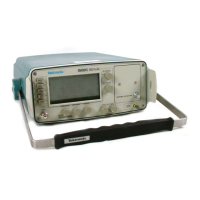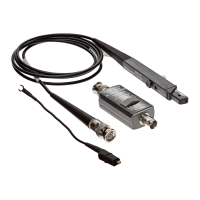1502C MTDR Service Manual
5–1
Circuit Descriptions
Introduction
This chapter describes how the instrument works. First is a circuit overview and how
it relates to the block diagram (Figure 5–1, next page). Following that are the
separate sections of the instrument, discussed in detail.
The 1502C uses time-domain reflectometry techniques to detect and display the
impedance characteristics of a metallic cable from one end of the cable. This is
accomplished by applying a rapidly rising step to the cable and monitoring the
resulting voltage over a period of time. If the cable has a known propagation
velocity, the time delay to a particular reflection can be interpreted in cable distance.
Amplitude of the reflected voltage is a function of the cable impedance and the
impedance of the termination relative to the cable leading to it. The amplitude can
be interpreted in rho or dB. Rho (
r
) is a convenient impedance function defined as
the voltage reflection coefficient. It is the ratio between the incident step and the
reflected step. For the simple case of a cable with a resistive load:
r
=
R
L
-Z
O
R
L
+Z
O
Where:
R
L
is the load impedance, and
Z
O
is the characteristic impedance.
The 1502C instrument is comprised of several subsections, as shown in the block
diagram (Figure 5–1). These are organized as a processor system, which controls
several peripheral circuits to achieve overall instrument performance.
The processor system reads the front-panel control settings to determine the cable
information that you selected for viewing. Distance settings are converted to
equivalent time values and loaded into the timebase circuits.
The timebase generates repetitive strobe signals to trigger the driver/sampler
circuits. Pulse strobes cause a step to be applied to the cable under test. Sample
strobes causes a single sample of the cable voltage to be taken during a very short
interval. The timebase precisely controls the time delay of the sample strobe relative
to the pulse strobe. When many sequential samples are recombined, a replica of the
cable voltage is formed. This sampling technique allows extremely rapid repetitive
waveforms to be viewed in detail.
Artisan Technology Group - Quality Instrumentation ... Guaranteed | (888) 88-SOURCE | www.artisantg.com

